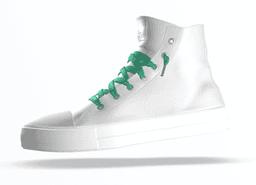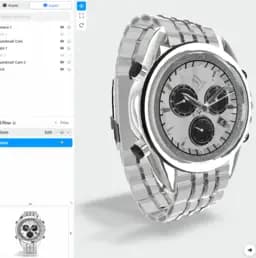Initial Thoughts on Godot vs SpriteKit
For platform-free and open-source game development, Godot is your best bet, boasting flexibility and a node-based architecture. However, if you’re focusing solely on iOS and macOS, aim for SpriteKit with its robust 2D graphics and physics capabilities, coupled with support from Apple.
![]()
Key Differences Between Godot and SpriteKit
- Platform Independence: Godot operates on multiple platforms; SpriteKit is exclusive to iOS and macOS.
- Development Language: Godot supports GDScript, C++, and C# with community support for other languages; SpriteKit principally employs Swift.
- Licensing: Godot is open-source and free; SpriteKit is owned and backed by Apple.
- Capability: Godot provides both 2D and 3D game development; SpriteKit is tailored for 2D games.
| Comparison | Godot | SpriteKit |
|---|---|---|
| Open Source | Yes | No |
| Framework Design | Scene-Driven | Animated-Physics Based |
| Scripting Language | GDScript, C++, Community Support for Others | Swift |
| Platform Support | Multiple, including Mobile and Desktop | iOS and macOS |
| 3D Support | Yes | No |
| Major Components | Nodes, Scenes | Scene, Node, Sprite, Action |
| Physics Engine | Integrated | Box2D |
| User-Friendliness | Intended for both beginners & experienced game devs | Requires expertise in Swift and iOS development |
| Ecosystem | Broadly Inclusive | Apple Restricted |
| Community Support | Yes | No |
What Is Godot and Who’s It For?
Godot is an open-source game engine that facilitates the creation of games from simple blocks through an intuitive scene-driven design. It’s renowned for allowing game developers to use nodes for constructing complex, reusable scenes. Godot is intended for both emerging and experienced game developers, thanks to its user-friendly interface and flexible GDScript, C++, and C# coding capabilities.
Moreover, it supports the import of Blender files and offers a specialized 2D workflow for the formulation of games and apps. Its open-source nature under the MIT license and a modifiable codebase makes it a favorable choice for many global developers advocating for more transparency in software development.

Pros of Godot
- Free, open-source and modifiable codebase
- Supports a wide array of language bindings
- Visual editor built into the engine for coding
- Excellent for both beginners and experienced game developers
- Regular updates and improvements.
Cons of Godot
- Not suitable for complex 3D game development
What Is SpriteKit and Who’s It For?
SpriteKit is a powerful game development framework designated for iOS and macOS that allows the construction of 2D games with physics-based gameplay and animated graphics. It offers a seamless interface for animating 2D game objects and cross-platform game creation through Game Center and iCloud support.
With a commitment to simplicity and efficiency, SpriteKit is intended for game developers interested in iOS and macOS game development. It consists of core components such as scene editing, animation, physics and particle systems, making it quite versatile.

Pros of SpriteKit
- Supports Swift language for efficient game development
- Adaptable for creating 2D games on iOS and macOS
- Assured future device support by Apple
Cons of SpriteKit
- Restricted to Apple ecosystem
- Requires expertise in Swift and iOS development
Code Examples for Godot & SpriteKit
Godot
This Godot example will illustrate how to programmatically create a 2D sprite and then make it move across the screen. Prior to running the script, your environment should have the Godot engine 3.2 or above installed.
extends Node2D
var sprite = null
func _ready():
sprite = Sprite.new()
sprite.texture = load("res://icon.png")
add_child(sprite)
func _process(delta):
sprite.position += Vector2(100.0, 0.0) * deltaSpriteKit
The SpriteKit example presents a basic animation of a rotating node. For an optimum performance, users must run the code in an environment operating on iOS 7.0 or above, and SpriteKit framework should be properly integrated.
import SpriteKit
class GameScene: SKScene {
override func didMove(to view: SKView) {
let node = SKShapeNode(circleOfRadius: 50) // Create a circular node
node.position = CGPoint(x: size.width/2, y: size.height/2)
let rotate = SKAction.rotate(byAngle: CGFloat.pi * 2.0, duration: 1.0) // Set rotation
node.run(SKAction.repeatForever(rotate))
addChild(node)
}
}Decoding the Superior – Godot or SpriteKit?
In the showdown between Godot and SpriteKit, knowing which arena fits you is integral.
1. All-Around Game Developer
For a developer seeking an all-around experience, Godot offers superior versatility with its intuitive scene-driven design and multi-language support. With no hidden fees or contracts, it lends a cost-effective solution.

2. iOS Specialist
If you’re confined within the Apple ecosystem, SpriteKit is your go-to toolkit. Armed with Swift and dedicated to iOS and macOS 2D game development, it provides solid support from the tech giant, Apple.
![]()
3. 3D Aficionado
To yield a high-end 3D experience, Godot stakes it claim. It facilitates the direct import of Blender files, allowing efficient 3D game development.

4. Startup Adopter
If you’re a startup focusing on MVP methodology and game analytics, SpriteKit takes the edge, with its efficient architecture and Apple’s expansion.
![]()
In the qualitative comparison of Godot and SpriteKit, Godot secures a robust footing with broad capabilities, from 2D to advanced 3D, and versatility in language support. SpriteKit, confined to Apple, excels in the iOS/macOS 2D gaming arena.







